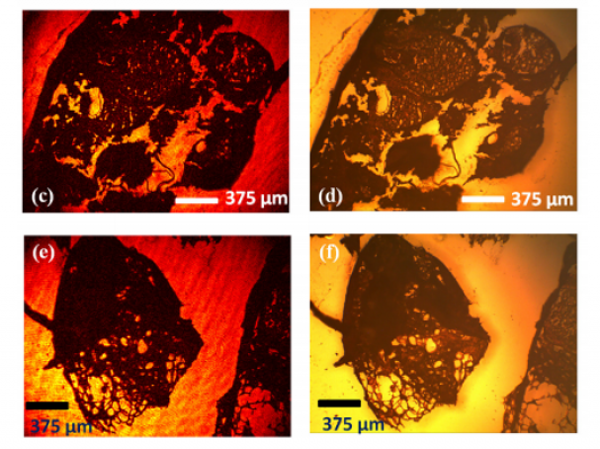New Hubble Videos Show Star Jets in Action
14 years’ worth of high-resolution pictures from the NASA/ESA Hubble Space Telescope have been spliced together for the first time to create video footage of Herbig-Haro objects–high-velocity jets shooting from the poles of baby stars. The outflows are relatively short-lived, astronomically-speaking, continuing for about 100,000 years before the star (presumably) stabilizes.
See more videos and get some insight to the aim of researchers from our friends at National Geographic, or watch back episodes of HubbleCast on the HubbleESA channel.
Quantum computer chips pass key milestones
And then, there were three. Just when you thought quantum computing might finally put an end to all that silly PC/Mac in-fighting, a new kind of quantum computing comes along to set up a future rivalry. Rather than using photons or trapped ions as qubits (the two options until now), Matteo Mariantoni of the University of California, Santa Barbara, and colleagues have boosted the computing power of a rival design, first demonstrated in 2003, that uses tiny, superconducting wires instead.
[T]he reason the new result is exciting is that it could be hard to scale up these [photon- and ion-based] systems, which tend to be delicate and require specialised equipment, while the superconducting system uses chips like an ordinary computer. “The beautiful thing about a solid circuit is that it’s something you can write using lithographic technology,” says White. “It looks much easier than say ion traps or photonic approaches.”
Learn more about Mariantoni’s design (and a lot more about quantum computing benchmarks) on NewScientist.
Scientists see early success using lasers to force rain clouds
What’s better than letting silver iodide rain down on us but scarier than regular rain? Forcing precipitation with frikkin’ laser beams. Researchers at the University of Geneva in Switzerland have managed to create nitric acid particles by firing a laser into cloud cover. The crystals form the seeds for condensation which collect together; if you’ll recall from elementary school, this is how raindrops are formed.
For now, the nitric acid crystals are tiny–a couple micrometers each. But given the potential toxicity (and arguable efficacy) of cloud-seeding with silver iodide, the project is a step in the right direction for bringing relief to areas of drought. DVICE has a nice rundown on the process.
Holographic Microscope Detects Bacteria on the Cheap

The microscope has two ways of analyzing samples: a transmission mode and a reflection mode. The transmission mode is good for transparent media, like thin slices of a sample or clear liquids. In this case, the microscope’s laser can easily penetrate and analyze microscopic objects. For denser, more solid samples the microscope uses holography to generate a 3-D image of the sample that can be beamed to remote computers for further analysis if necessary.
Because the device is so inexpensive, it could easily be mass produced and used not only in a laboratory, but in-field as a tool for testing water supply and food for harmful bacteria in rural areas and underdeveloped nations. This is a trend in applied medical tech we’ve noticed recently, as more and more often we’re seeing inexpensive detection devices that use low-tech means to provide cheap, fast aide in an easily distributed format. Get more details about the holography microscope on PopSci.
More suggested reading:
- Solution makes tissue transparent – An inexpensive process turns tissue transparent without distorting its shape, allowing researchers to view internal tissues without destructive incisions.
- Jupiter-Bound Spacecraft Sees Earth and Moon from Afar – Take a moment to enter the Total Perspective Vortex. This shot from the Juno spacecraft, taken just a few weeks after its departure, shows Earth and the Moon in a humbling scale.
- Chinese Scientists Plan to Pull an Asteroid into Orbit Around Earth – Popular sci-fi scenarios for the destruction of our home world often feature a wayward asteroid plummeting to the surface, but this isn’t like that. No, no.


